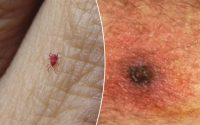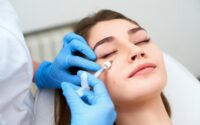Most Americans don’t know they have prediabetes — here’s how to check for yourself
More than one-third of US adults has prediabetes, a serious condition that can lead to type 2 diabetes.
And a whopping 80% of those people don’t even know they have prediabetes, according to the Centers for Disease Control and Prevention.
But the CDC is pushing back on the rise in type 2 diabetes with a “Be Your Own Hero” initiative aimed at getting people to take a one-minute prediabetes test so they can delay or prevent type 2 diabetes.
“Diabetes is a devastating public health problem, and I cannot overstate the toll that it continues to take on millions of people across the United States,” Dr. Christopher Holliday, director of the CDC’s Division of Diabetes Translation, said in a news release.
“Identifying prediabetes is an opportunity for people to change their story and prevent or delay type 2 diabetes. It’s vital that we continue to raise awareness of prediabetes and encourage everyone to learn where they stand,” Holliday added.

The online prediabetes test — which is completely anonymous — and the promotion campaign, developed with the Ad Council and creative agency Subject Matter+Kivvit, was designed to let people know if they’re at high risk for type 2 diabetes.
If someone receives a high-risk score, the campaign provides additional resources and encourages people to speak with a doctor about getting a blood test to confirm a diagnosis of prediabetes.
In prediabetes, long-term damage to the heart, blood vessels and kidneys may have already started — but fortunately, progressing from prediabetes to type 2 diabetes isn’t inevitable, and the risk can be reversed, according to the Mayo Clinic.
Unfortunately, prediabetes often has no outward signs or symptoms, though in some cases, an early sign of the condition is darkened skin on or around the neck, armpits and groin.

Some signs that suggest a person has moved from prediabetes to type 2 diabetes include:
- Increased thirst or hunger
- More frequent urination
- Fatigue
- Blurred vision
- Numbness or tingling in the feet or hands
- Frequent infections
- Slow-healing sores
The new CDC effort is an effort to inspire Americans to embrace lifestyle changes such as eating healthier, managing weight and being active, to help prevent or delay the onset of type 2 diabetes.
“This action-packed and engaging new work illustrates the power that each of us has to take control of our own fate, in this case, by taking action to reduce our risk of type 2 diabetes,” said Heidi Arthur, chief campaign development officer at the Ad Council.


